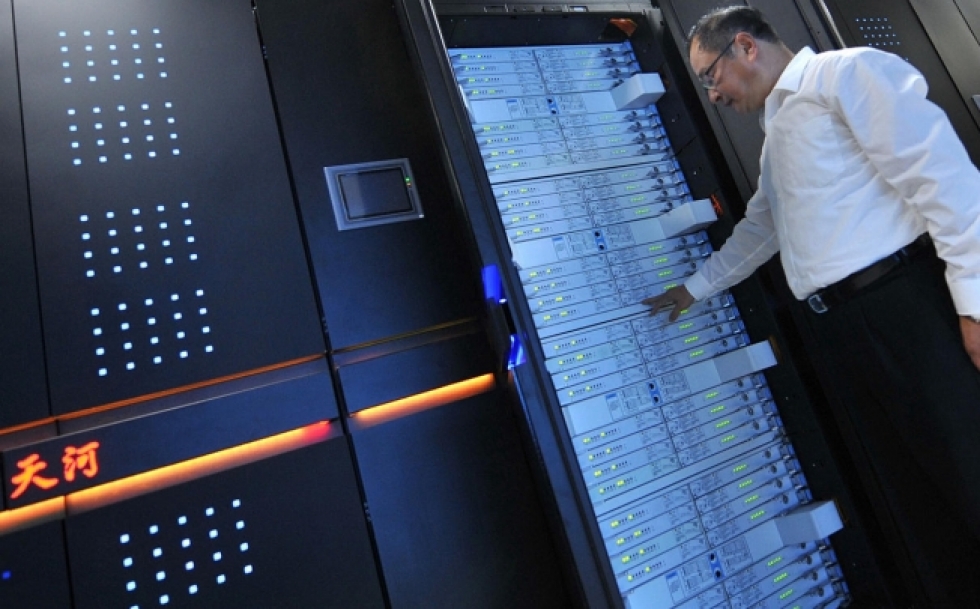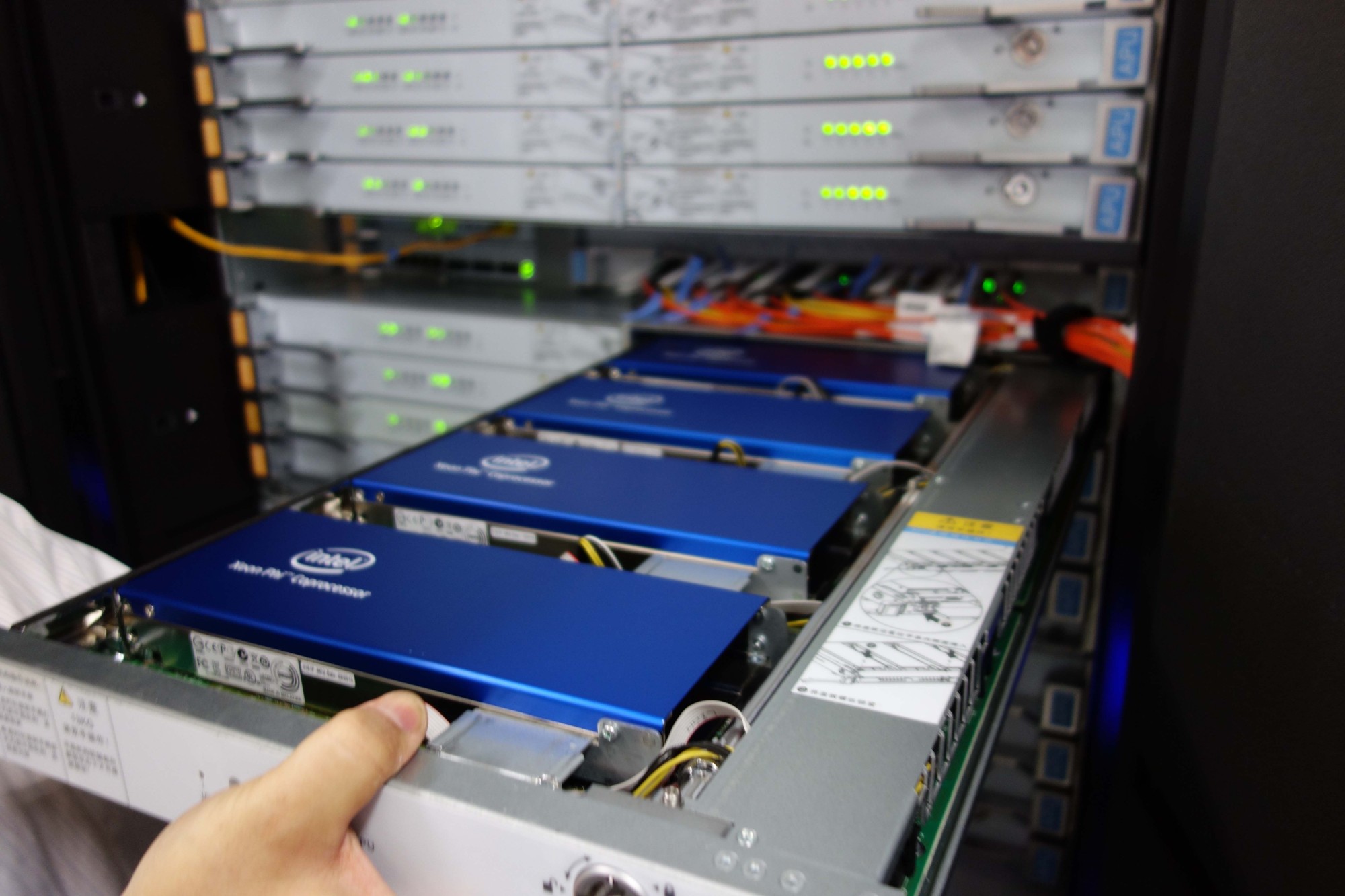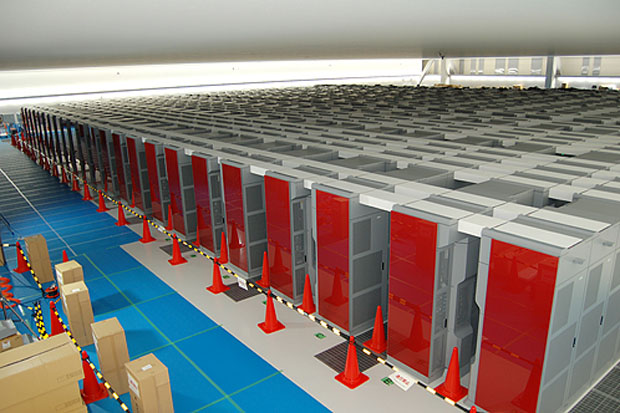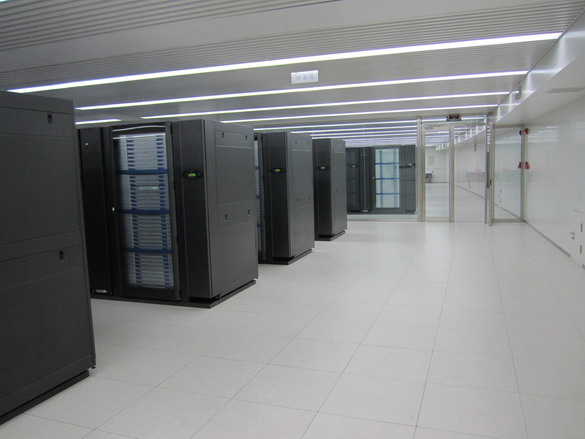NOVEMBER 2014
For the fourth consecutive time, Tianhe-2, a supercomputer developed by China’s National University of Defense Technology, has retained its position as the world’s No. 1 system with a performance of 33.86 petaflop/s (quadrillions of calculations per second) on the Linpack benchmark, according to the 44th edition of the twice-yearly TOP500 list of the world’s most powerful supercomputers.

In fact, there was little change among the ranking of the world’s top 10 supercomputers in the latest edition of the closely watched list. The only new entry was at number 10—a 3.57 petaflop/s Cray CS-Storm system installed at an undisclosed U.S. government site.

A detailed analysis of the latest TOP500 list will be presented Tuesday, Nov. 18, at the SC14 conference in New Orleans. At that time, the full list will also be published at TOP500.org.

Although the United States remains the top country in terms of overall systems with 231, this number is down from 233 in June 2014 and down from 265 on the November 2013 list. The U.S. is nearing its historical low number on the list.

The number of European systems rose to 130, up from 116 last June, while the number of systems across Asia dropped from 132 to 120. The number of Chinese systems on the list also dropped, now at 61, compared to 76 in June 2014. Over the same period, Japan increased its number of systems from 30 to 32.

SAN FRANCISCO Juni 2011 — In the rankings of the world’s most powerful supercomputers, a Japanese machine has earned the top spot with a performance that essentially laps the competition.
Haruyoshi Yamaguchi/Bloomberg News
Parts for a "K” supercomputer are assembled at the Fujitsu plant in Hokuto City, Japan.

The computer, known as "K Computer,” is three times faster than a Chinese rival that previously held the top position, said Jack Dongarra, a professor of electrical engineering and computer science at the University of Tennessee at Knoxville who keeps the official rankings of computer performance.
 |
"It’s a very impressive machine,” Mr. Dongarra said. "It’s a lot more powerful than the other computers.” The latest ranking of the top 500 computers, to be released Monday, is determined by running a standard mathematical equation. The winning computer was able to make 8.2 quadrillion calculations per second, or in more technical terms, 8.2 petaflops per second. The performance of K is equivalent to linking around one million desktop computers, Mr. Dongarra said. Supercomputers are used for earthquake simulations, climate modeling, nuclear research and weapons development and testing, among other things. Businesses also use the machines for oil exploration and rapid stock trading. Building supercomputers are costly and involve connecting thousands of small computers in a data center. K is made up of 672 cabinets filled with system boards. Although considered energy-efficient, it still uses enough electricity to power nearly 10,000 homes at a cost of around $10 million annually, Mr. Dongarra said. The research lab that houses K plans to increase the computer’s size to 800 cabinets. That will raise its speed, which already exceeds that of its five closest competitors combined, Mr. Dongarra said. |
K succeeded in pushing the previous leader, China’s Tianhe-1A supercomputer (see below), at the National Supercomputing Center in Tianjin, China, to second place. Tianhe-1A had been the first Chinese computer to be ranked on top, signaling the country’s growing technological might.
The fastest computer in the United States, at Oak Ridge National Laboratory, in Oak Ridge, Tenn., placed third.
Asian countries have made huge investments in supercomputing and now dominate the upper echelon of the field. Japan and China hold four of the top five spots in the latest ranking.
However, in terms of the top 10, the United States remains the leader with five computers. They are at government research facilities.
Japan’s top supercomputer ranking is its first since 2004. The United States and China are the only other countries to have held the title.
The rankings, which are issued every six months, change frequently and reflect how fast computer power is advancing. For example, the top ranked computer in June 2008, at Los Alamos National Laboratory in New Mexico, is now in 10th place.
Mr. Dongarra said a computer called Blue Waters, being developed at the University of Illinois at Urbana-Champaign, may rival K in speed.

Tianhe-I, Tianhe-1 or TH-1 (天河一号)


 |
Tianhe-1 was developed by the Chinese National University of Defense Technology (NUDT) in Changsha, Hunan. It was first revealed to the public on 29 October 2009 and was immediately ranked as the world's fifth fastest supercomputer in the TOP500 list released at the 2009 Supercomputing Conference (SC09) held in Portland, Oregon, on 16 November 2009. Tianhe achieved a speed of 563 teraflops in its first Top 500 test and had a peak performance of 1.2 petaflops. Thus at startup, the system had an efficiency of 46%. Originally, Tianhe-1 was powered by 4,096 Intel Xeon E5540 processors and 1,024 Intel Xeon E5450 processors, with 5,120 AMD graphics processing units (GPUs), which were made up of 2,560 dual-GPU ATI Radeon HD 4870 X2 graphics cards. |


IBM's supercomputer Summit overtook China's Sunway TaihuLight to become the world's fastest supercomputer, according to a biannual ranking of the world's 500 fastest supercomputers, or the Top500, published Monday.
Summit, recently unveiled at the U.S. Department of Energy's Oak Ridge National Laboratory in Tennessee State, captured the number one spot with a performance of 122.3 petaflops on high-performance Linpack (HPL), the benchmark used to rank the Top500 list, the statement said. A petaflop is a measure of a computer's processing speed.
Shan Hongzhang, a computer scientist at the Lawrence Berkeley National Laboratory, told Xinhua that the structure of Summit potentially reduced the traditional performance overhead of transferring data between the central processing unit and graphics processing unit. Summit is designed for research in energy, advanced materials and artificial intelligence (AI). Sunway TaihuLight, developed by China's National Research Center of Parallel Computer Engineering and Technology and installed at the National Supercomputing Center in Jiangsu Province, ranked number two after leading the list for the past two years. Its HPL mark of 93 petaflops has remained unchanged since it came online in June 2016.
The number three spot goes to Sierra, a new system developed by the U.S. Department of Energy's Lawrence Livermore National Laboratory in California State, delivering 71.6 petaflops on HPL.
China's Tianhe-2A, developed by the National University of Defense Technology and installed at the National Supercomputer Center in Guangzhou, moved down two notches into the number four spot. But a major upgrade of its hardware increased the system's performance from 33.9 petaflops to 61.4 petaflops.
Japan's new AI Bridging Cloud Infrastructure is the fifth-ranked system on the list, with 19.9 petaflops.
The Top500 list is considered one of the most authoritative rankings of the world's supercomputers. It is compiled on the basis of the machines' performance on the Linpack benchmark by experts from the United States and Germany.
